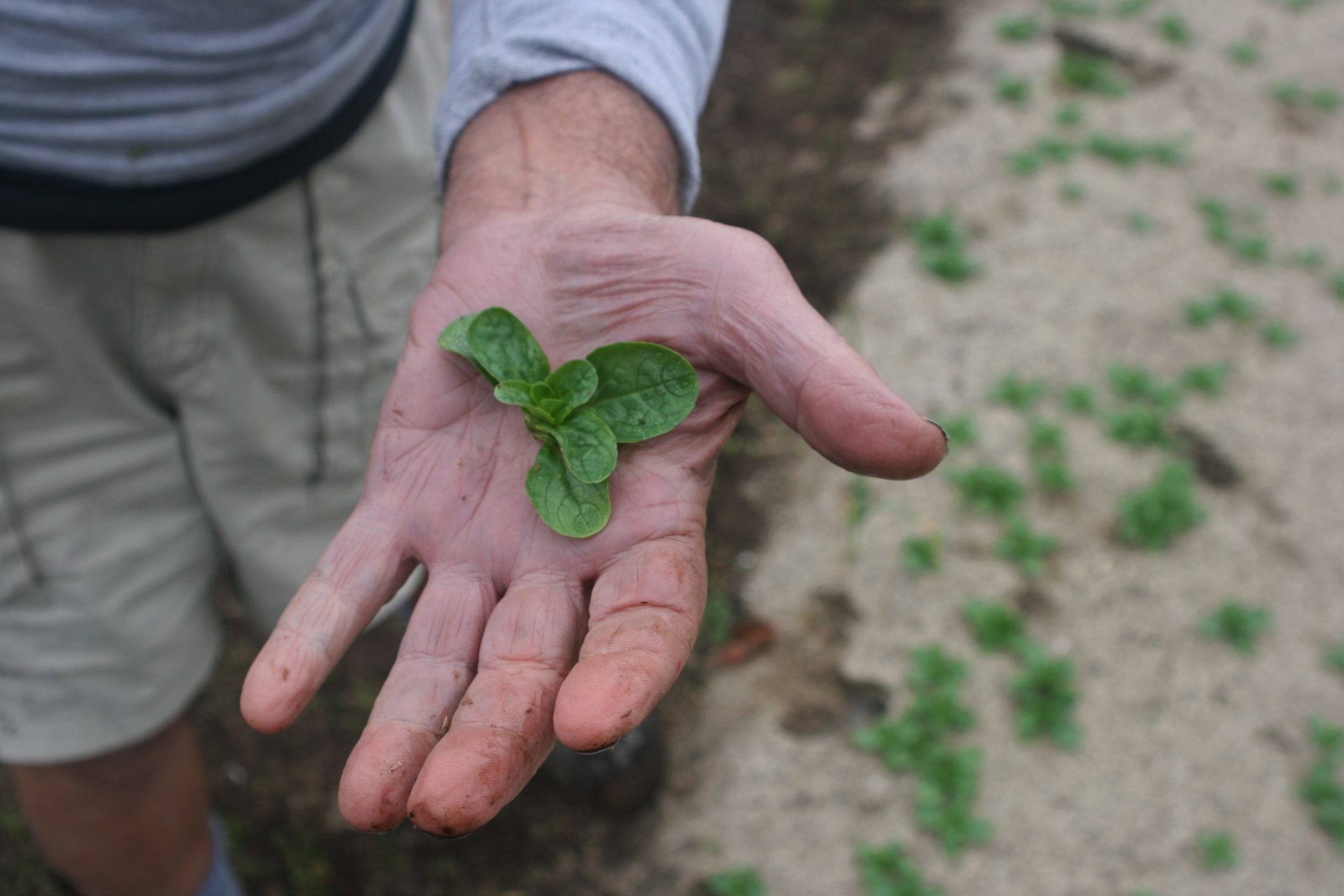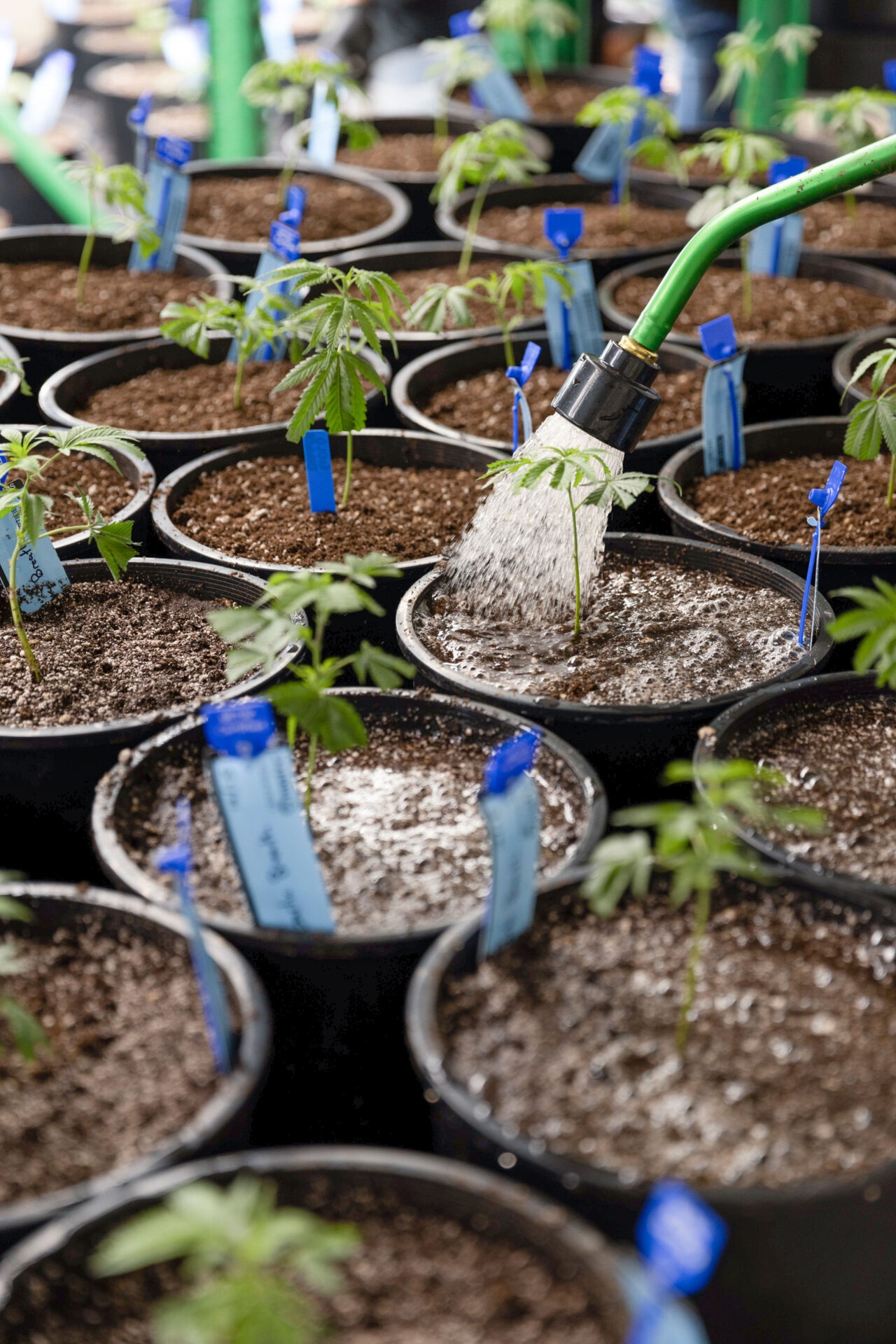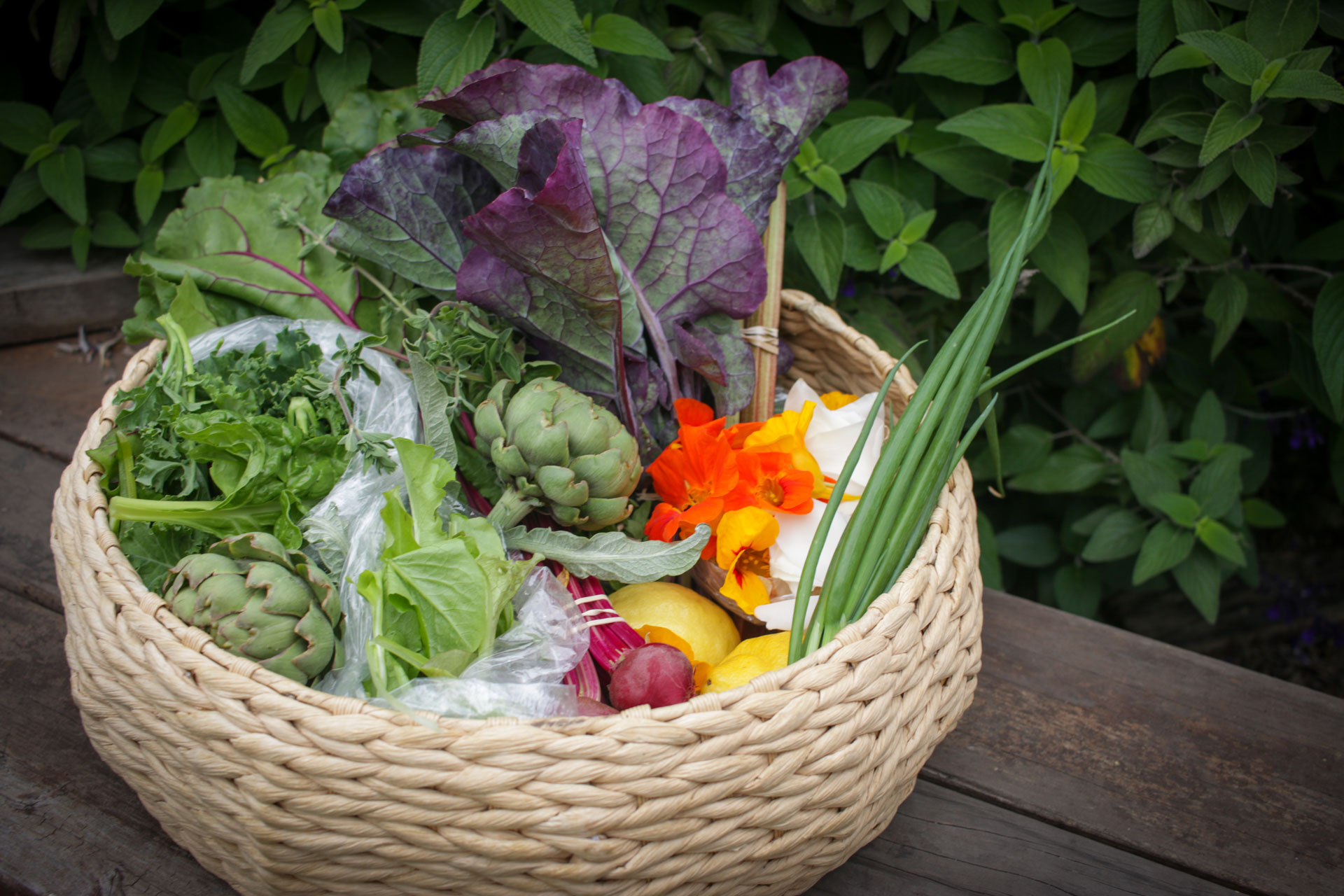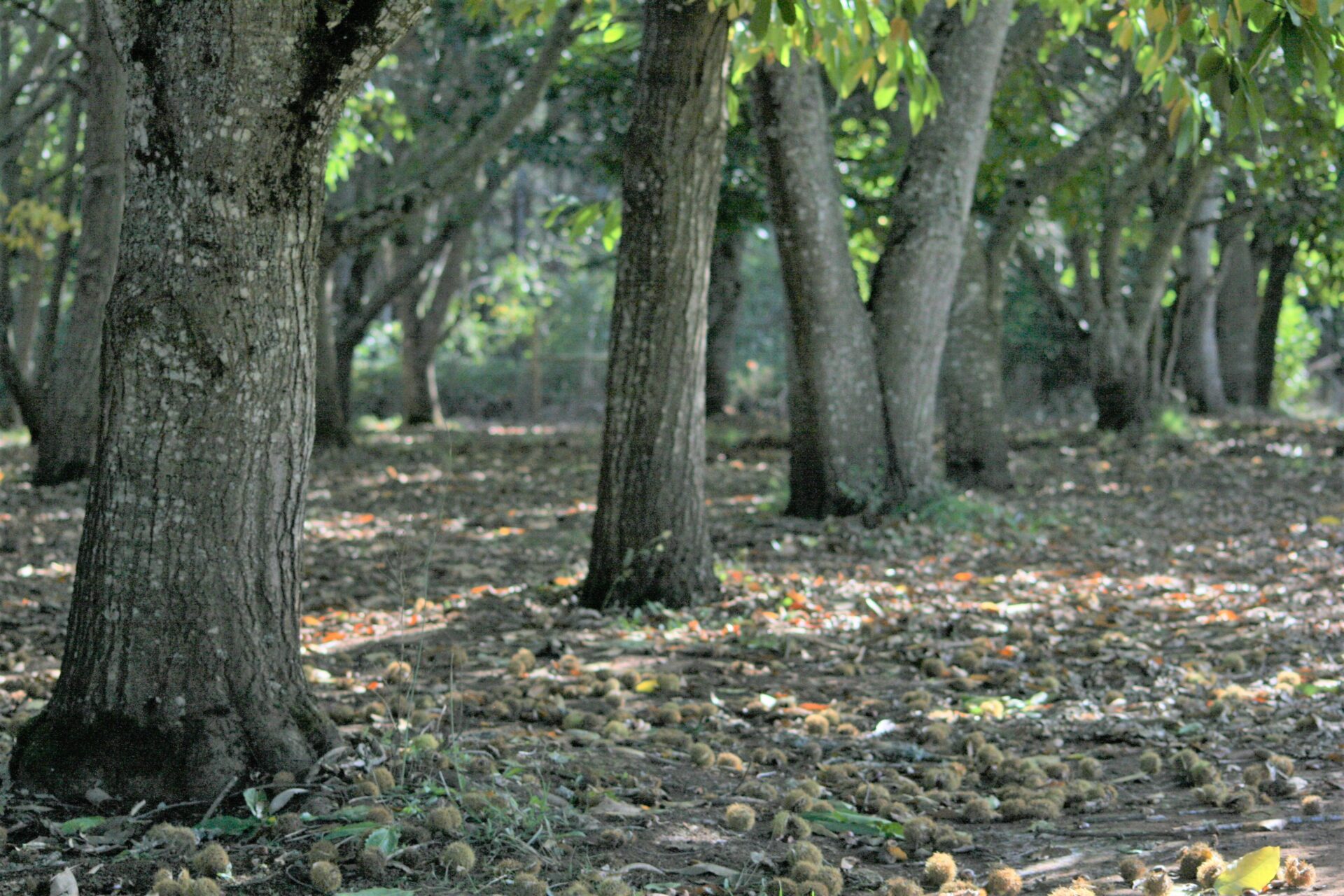George Weppler is 80 now, but he still keeps a hand in Weppler Farms—a business he started in the late 1970s. The farm is situated on a 28-acre chunk of land tucked into the Cascade foothills of Brownsville, Oregon. The Calapooia River skirts the property. The land was once a walnut orchard. It’s also been a hops farm and a potato patch. And for a while before Weppler and his wife Fran bought the property in 1976, it was pasture for a Jersey milk cow. “I know the history of this land,” Weppler said. “No poison, no chemicals of any kind has ever been put on this piece of land, ever.”
Weppler got into the business of growing produce for upscale restaurants almost by accident. With degrees in accounting, business administration and biology, he was predisposed to just such a business, even before he realized it. “I started it to have good things to eat for myself and my family,” Weppler said. Locals started coming out to the farm to buy produce. Then Weppler helped his neighbors market wild mushrooms. Their mushroom customers asked if they had anything else for sale. The neighbors mentioned Weppler’s vegetables, and a chef asked to see some of his produce. “It grew from there,” Weppler said. “It just happened.”
Weppler began shipping tender young greens, lettuces and other vegetables to restaurants around the country. He points to three things as a guide to his success—soil health, providing a quality product, and building relationships. A solid work routine also enters into the recipe.
Soil
Weppler started out with a rich layer of natural river loam. He’s added to it and improved the soil over the course of many years. His soil is rich, dark, and crumbly. He demonstrates the tilth by plunging both hands forearm deep into a planting bed.
Weppler uses two-inches of dried, screened cow manure from an organic dairy as top soil. It goes under and over seeds. After the crop is harvested, the manure top layer is tilled into the bed. When he starts a new bed, he first adds chicken manure from an organic, free-range chicken farm. The chicken manure gives the plants a quick dose of nitrogen. In the fall and winter, Weppler makes use of the big leaf maple trees on his property. He collects the leaves and tills them into the soil. He doesn’t use the walnut leaves—too much acidity from the tannic acid.

Routine
Crop harvest and shipping comes the first part of each week. Mid-week is the time to clean and prep new beds. Replanting comes at the end of the week. Of course routine can change—it’s often dependent on weather.
Weppler Farms plants year round. “We grow a certain amount of product all year,” Weppler said. On a recent invoice, Weppler listed arugula, bok choy, carrots, celeriac, cress, fennel, chanterelles, romaine, kale, mustard, cauliflower, leeks, lettuce, peppers, potatoes, radishes, spinach, shallots, squash, Treviso, radicchio. He also supplies restaurants with wild mushrooms, such as chanterelles and morels, from Oregon forests.
Relationships and Product Quality
Relationships with his buyers developed over the years. Weppler has learned which chefs prefer which vegetables and how much they use in any given week. He rarely gets phone calls or orders. “I know their usage and know what they want. I know times of year when they’re busy and when they’re not.”
Weppler doesn’t want restaurants to have produce leftover at the end of the week, so he even knows when to cut back on the shipment. For example, he knows when a particular chef closes his or her restaurant for a long Fourth of July weekend.
Weppler ships to established clientele weekly. Some of the accounts he’s held onto for 25 years or more. One restaurant in St. Paul, Minnesota, has bought Weppler Farms’ produce since 1982. “They are willing to pay the price for a better product,” Weppler said. People who eat at high-end restaurants, he said, want to see something different that they can’t buy at their local grocery store.
His business has all been created by word of mouth. “I’ve never had to spend anything on advertising,” Weppler said. “I’m willing to produce what these people need.” That way, he says, he knows he’s able to move the crops he produces.
Weppler sells to two restaurants in Brownsville. Most everything else ships by air. He makes a run weekly to the airport. It’s picked fresh, usually that same morning, flown in, and then driven by courier to the restaurants. “I guarantee it will get there in top absolute condition.”
At the height of his production, Weppler sold to 20-30 restaurants in Alaska, Hawaii, Washington DC, Wisconsin, Florida and other states. He’s semi-retired now and has scaled back by half. He does enough to keep three people working. “We just grow enough to satisfy what it takes three people to do,” Weppler said. He first turned over farm production to his son, Ted, then later to his and Fran’s nephew, Jeff Timpone, who’s been at the farm now for 10 years.

Growing Practices
Most of the crops are grown under cover, either under plastic row covers or under crop cover cloth. A limited amount of crops are grown in raised beds inside a greenhouse. For the row covers, Weppler uses concrete reinforcing wire. He cuts it to size—it’s already shaped in half rounds from being in a roll. He and Timpone cover the wire hoops with plastic and hold the plastic down along the sides and at both ends with shovels full of soil.
Production slows from mid-December to mid-February when the weather gets too cold for many of the crops. Young greens, baby spinach and mustards continue to grow under the low hoop houses and under the cover cloth—which can protect crops down to three degrees F.
Weppler doesn’t cut and grow again. After harvesting, he reworks the bed, adds fertilizer, tops it off with dried cow manure and replants everything. He looks at it like this: after a crop has grown, it’s taken nutrients out of the soil. So, better to start fresh, with fertilizer, tilled soil and a top dressing of cow manure. This time of year it takes about five weeks from transplanting to harvesting lettuces. He starts some of the plants inside the greenhouse.
Weppler sells a lot of salad packs. He tries to pack eight different things in a salad mix—not only assorted young lettuces, but Asian greens, baby spinach, mustards and radicchio.

Pests
Ground cloth protects against marauding deer, nutria and quail. The cloth also helps protect against insects such as the flea beetle, which are tiny, but in massive numbers can decimate a crop.
Spotted cucumber beetle was once a problem on the farm. Weppler nipped back the population years ago by paying people to hand pick the insects and drop them into a can of water and detergent.
Weppler says there are a few small actions that can keep insect populations under control. In the spring, he explains, the plants don’t have as many nutrients. Spotted cucumber beetles are looking for plants rich in nutrient value, so they are drawn to dandelion flowers. Weppler goes along and hand picks beetles out of the dandelions, which knocks back the breeding population. “I don’t have many on the farm anymore,” he said.
When moles become a problem, Weppler hires a trapper to keep them under control.

Varieties
Many of Weppler’s favorite vegetable varieties are European—a ringed beet from Italy, a red and green splotchy-leafed lettuce from Austria, and a pointy tomato from France. “I’ve grown about 400 varieties of tomatoes,” Weppler said. “Russia and Siberia have the best tomatoes. They grow in short seasons.” He’s whittled his favorites down to about a dozen that he grows consistently, including several colorful heirloom varieties.
French breakfast radish is Weppler’s favorite plant. Weppler Farms grow radishes year round. They are a good cash crop for him, and take up little growing space. He or Timpone plant radish seed every two weeks. There is ¾ of a pound in each of their bagged radish packs. In a roughly six-by-six section of a raised bed, they will get 20 packs a week, or roughly 960 packs per year. Weppler Farms radishes are small, with a tender texture and mild heat.
Weppler is particularly proud of his carrots. They are small, straight and sweet. He points to the soil tilth as the biggest factor. When carrots don’t have to fight for growing space they are able to grow straight, instead of forking, and they produce more sugars. Also, carrots don’t want a lot of fertilizer, he said.
Weppler has learned a lot about various crops throughout the years. “Different plants have different requirements” he said, noting that he’s gotten a lot of good advice by talking to other growers and asking questions.






